Samsung Announces 960 PRO And 960 EVO M.2 PCIe SSDs (Updated)
by Billy Tallis on September 21, 2016 12:01 AM EST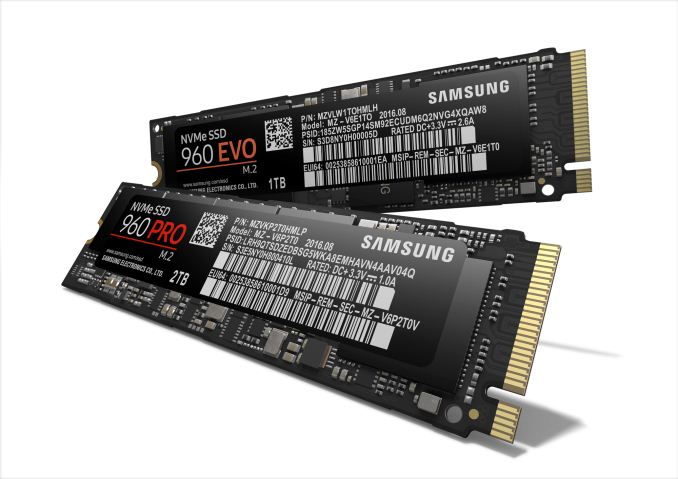
UPDATE: New features unveiled during the presentation and Q&A session are described below.
Here at Samsung's SSD Global Summit in South Korea, the company has just officially unveiled their next generation of M.2 PCIe SSDs. The new 960 PRO SSD is the successor to the 950 PRO, launched at last year's Summit as Samsung's first M.2 PCIe SSD for the retail market. The new 960 EVO introduces a more affordable option based on TLC NAND flash.
Samsung's early M.2 PCIe SSDs were officially OEM-only products. The XP941 was one of the first PCIe SSDs designed for client computing use and used the AHCI protocol that is standard for SATA controllers rather than the newer NVMe protocol. The next generation consisted of the SM951 and PM951 SSDs, which adopted a new controller that supports PCIe 3.0 x4 operation and provides NVMe support as an option. The 950 PRO uses the same controller as the SM951 but introduced Samsung's 3D V-NAND to the product family for the first time.
Earlier this year, Samsung released a new generation of OEM M.2 PCIe SSDs: the SM961 and PM961. These brought V-NAND to the OEM side of the family and introduced a new Samsung "Polaris" SSD controller that allowed for substantial performance improvements. Availability of the SM961 and PM961 through unofficial retail distributors has been extremely limited, but given their performance, demand has been high. The 960 PRO and 960 EVO are Samsung's answer.
| Samsung SSD Comparison | ||||||||
| 960 PRO | 960 EVO | SM961 | PM961 | 950 Pro | SM951- NVMe |
PM951- NVMe |
||
| Form Factor | M.2 2280 | |||||||
| Controller | Samsung Polaris | Samsung Polaris | Samsung UBX | unknown | ||||
| Interface | PCIe 3.0 x4 | |||||||
| Protocol | NVMe | |||||||
| NAND | Samsung 48-layer MLC V-NAND | Samsung 48-layer TLC V-NAND | Samsung MLC NAND | Samsung TLC NAND |
Samsung 32-layer MLC V-NAND | Samsung 16nm MLC | Samsung 16nm TLC | |
| Capacity | 512GB, 1TB, 2TB | 250GB, 500GB, 1TB | 128GB, 256GB, 512GB, 1TB | 128GB, 256GB, 512GB, 1TB | 256GB, 512GB | 128GB, 256GB, 512GB | 128GB, 256GB, 512GB | |
| Sequential Read | 3500 MB/s | 3200 MB/s | 3200 MB/s | 3000 MB/s | 2500 MB/s | 2150 MB/s | 1050 MB/s | |
| Sequential Write | 2100 MB/s | 1900 MB/s | 1800 MB/s | 1150 MB/s | 1500 MB/s | 1550 MB/s | 560 MB/s | |
| 4KB Random Read (QD32) | 440k IOPS | 380k IOPS | 450k IOPS | 360k IOPS | 300k IOPS | 300k IOPS | 250k IOPS | |
| 4KB Random Write (QD32) | 360k IOPS | 360k IOPS | 400k IOPS | 280k IOPS | 110k IOPS | 100k IOPS | 144k IOPS | |
| Launch Date | October 2016 | 2H 2016 | October 2015 | ~June 2015 | 2015 | |||
The 960 PRO is clearly more than just a retail branded edition of the SM961. The largest capacity will be 2TB, compared to 1TB for the SM961 and 512GB for the 950 PRO, and the smallest capacity will be 512GB. The 950 PRO never bothered with a 128GB capacity, and with the addition of the 960 EVO to the lineup, Samsung is most likely retiring the 256GB capacity due to performance limitations. Sequential transfer speeds are significantly higher while random access speeds are slightly lower. Additionally, the 960 PRO shows a power rating of 1.0A at 3.3V, compared to 2.4-2.7A for Samsung's previous M.2 PCIe SSDs. Such a big decrease in maximum power draw is sure to translate to significant savings even in ordinary usage. (Update: this label is probably incorrect, as the presentation cited 5.1W active power for the 512GB 960 PRO, a more modest power saving.) Unfortunately, the warranty is still the 5 years offered on the 950 PRO rather than the 10 years offered for the 850 PRO.
| Samsung 960 PRO Specifications Comparison | ||||||
| 960 PRO 2TB | 960 PRO 1TB | 960 PRO 512GB | 950 PRO 512GB |
950 PRO 256GB |
||
| Form Factor | single-sided M.2 2280 | single-sided M.2 2280 | ||||
| Controller | Samsung Polaris | Samsung UBX | ||||
| Interface | PCIe 3.0 x4 | |||||
| NAND | Samsung 48-layer 256Gb MLC V-NAND | Samsung V-NAND 32-layer 128Gbit MLC | ||||
| Sequential Read | 3500 MB/s | 3500 MB/s | 3500 MB/s | 2500MB/s | 2200MB/s | |
| Sequential Write | 2100 MB/s | 2100 MB/s | 2100 MB/s | 1500MB/s | 900MB/s | |
| 4KB Random Read (QD32) | 440k IOPS | 440k IOPS | 330k IOPS | 300k IOPS | 270k IOPS | |
| 4KB Random Write (QD32) | 360k IOPS | 360k IOPS | 330k IOPS | 110k IOPS | 85k IOPS | |
| Power | 5.8W (average) | 5.3W (average) | 5.1W (average) | 7.0W (burst) 5.7W (average) 1.7W (idle) |
6.4W (burst) 5.1 (average) 1.7W (idle) |
|
| Endurance | 1200TB | 800TB | 400TB | 400TB | 200TB | |
| Warranty | 5 Year | 5 Year | ||||
| Launch MSRP | $1299 | $629 | $329.99 | $350 | $200 | |
As with the 960 PRO, the 960 EVO differs from its OEM counterpart. The capacities are the slightly lower 250GB-1000GB typical of Samsung's EVO SSDs rather than the power of two capacity points used on the PRO and OEM products. Peak sequential write speed is substantially higher than the PM961 and even exceeds the 950 PRO, thanks in part to Samsung's new generation SLC caching technology branded "Intelligent TurboWrite". The rest of the performance specifications are slightly higher than the PM961. There's no 2TB option, but this is purely a business decision rather than a technical limitation.
| Samsung 960 EVO Specifications Comparison | ||||||
| 960 EVO 1TB | 960 EVO 500GB | 960 EVO 250GB | 950 PRO 512GB |
950 PRO 256GB |
||
| Form Factor | single-sided M.2 2280 | single-sided M.2 2280 | ||||
| Controller | Samsung Polaris | Samsung UBX | ||||
| Interface | PCIe 3.0 x4 | |||||
| NAND | Samsung 48-layer 256Gb TLC V-NAND | Samsung V-NAND 32-layer 128Gbit MLC | ||||
| SLC Cache Size | 42GB | 22 GB | 13GB | N/A | ||
| Sequential Read | 3200 MB/s | 3200 MB/s | 3200 MB/s | 2500MB/s | 2200MB/s | |
| Sequential Write (SLC Cache) | 1900 MB/s | 1800 MB/s | 1500 MB/s | 1500MB/s | 900MB/s | |
| Sequential Write (sustained) | 1200 MB/s | 600 MB/s | 300 MB/s | N/A | N/A | |
| 4KB Random Read (QD32) | 380k IOPS | 330k IOPS | 330k IOPS | 300k IOPS | 270k IOPS | |
| 4KB Random Write (QD32) | 360k IOPS | 330k IOPS | 300k IOPS | 110k IOPS | 85k IOPS | |
| Power | 5.7W (average) | 5.4W (average) | 5.3W (average) | 7.0W (burst) 5.7W (average) 1.7W (idle) |
6.4W (burst) 5.1 (average) 1.7W (idle) |
|
| Endurance | 400TB | 200TB | 100TB | 400TB | 200TB | |
| Warranty | 3 Year | 5 Year | ||||
| Launch MSRP | $479 | $249 | $129.88 | $350 | $200 | |
Samsung has had a bit of a rough year with the transition to their 48-layer V-NAND: the promised 1TB 950 PRO never materialized and other products using the 48-layer V-NAND have been late or also failed to show up. Fortunately, Samsung's SSD controller technology hasn't faltered and their competitors have been slow to catch up. With the launch of the 960 PRO and 960 EVO, Samsung is putting most of those troubles behind them and they will probably resume dominating the SSD market while making it look easy.
Updates:
Samsung's Polaris SSD controller is a five-core chip, compared to the three-core design of the UBX controller used by the 950 PRO. One of the 5 cores on the Polaris controller is dedicated for host communication, while the remaining four cores are used for flash management. For the 2TB 960 PRO, the DRAM is stacked on top of the controller in a Package-On-Package configuration to free up PCB space for a total of four NAND packages.
Samsung has taken several measures to reduce the incidence of thermal throttling with the 960s, resulting in the 960 PRO lasting 50% longer before throttling on a sequential read test (and due to the increased performance, it transfers more than twice the data before throttling). Most of the improvement comes from increased power efficiency, but in addition, the 960 PRO and EVO include a heatspreader of sorts on the back side. The adhesive label includes a thin layer of copper. One Samsung engineer estimated that this sticker accounts for about 30% of the improved thermal performance.
Samsung also previewed the next version of their Magician software, which is getting a user interface overhaul and a few new features. One of the more interesting features is a secure file erase capability. Using a proprietary extension to the NVMe command set, the Magician software will be able to issue what is essentially a mandatory block erase command (whereas TRIM is a hint the drive is free to ignore or delay acting upon). Samsung was unclear on the exact mechanism for eradicating the specified data; we're not sure if it is simply erasing the data or actually overwriting it while bypassing the wear leveling mechanism, and it is unclear what happens to any lingering data in the SSD's spare area that is from previous versions of the file. In the long run, this kind of capability will be very well received in certain government and corporate environments where it will be very handy to be able to eradicate sensitive data without wiping the whole drive, but for now this is more of a novelty feature that is being tested in the consumer market before it can acquire the necessary certifications.


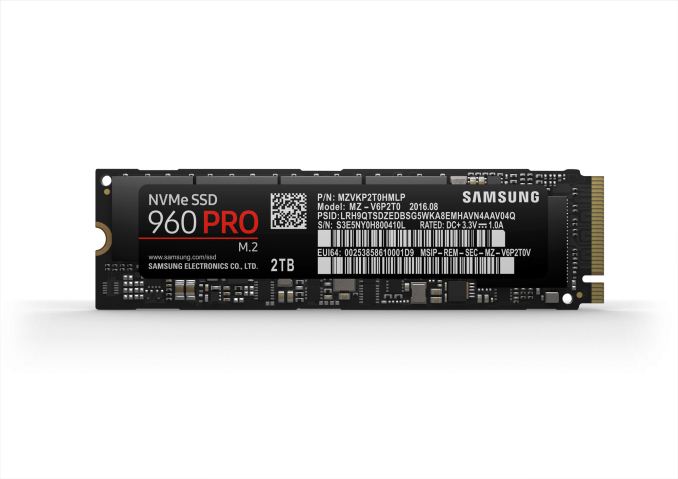
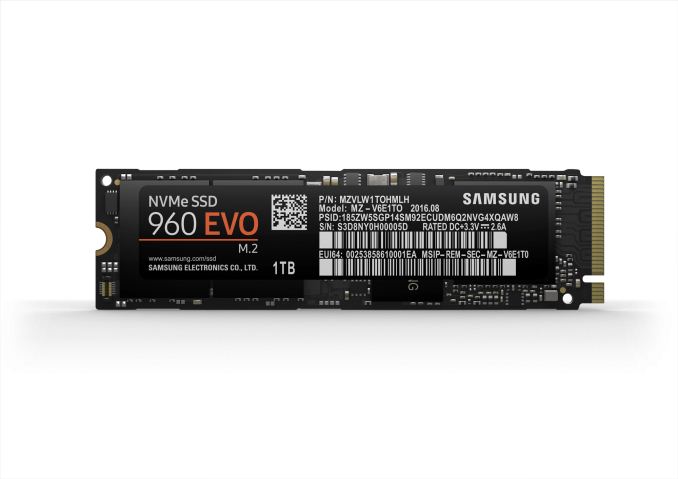
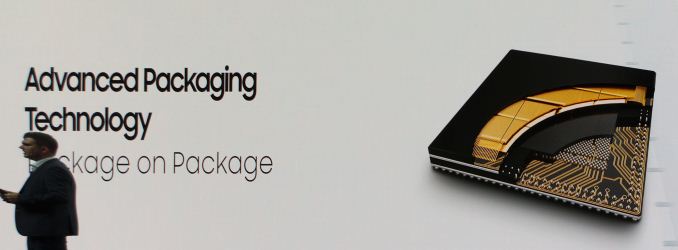


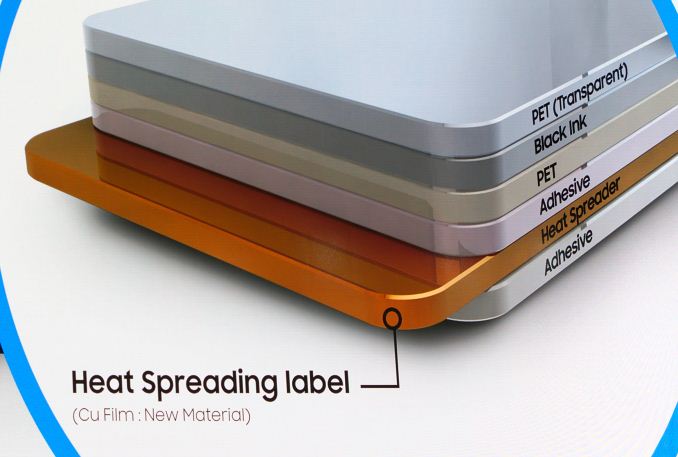








134 Comments
View All Comments
Ergosum - Wednesday, September 21, 2016 - link
mIDE! I love it! No more ribbon cables!HollyDOL - Wednesday, September 21, 2016 - link
Hmm, 1TB 960Pro would have such a nice comfy cushioned spot on my motherboard...damianrobertjones - Wednesday, September 21, 2016 - link
Small speed increments ensuring the max flow of $$$$$. Come on people... When are we going to stand the small grind forward? When do we stop loving the marketing people?alistair.brogan - Wednesday, September 21, 2016 - link
Yeah the price is really disappointing. Still waiting for the $350 1TB or no buy for me. Just get a 2TB 850 evo instead.smilingcrow - Wednesday, September 21, 2016 - link
We must be looking at different data sets as there are big increases for the 960 Pro over the 950 Pro not that it would be noticeable for many consumer workloads.willis936 - Wednesday, September 21, 2016 - link
I was going to say I can't remember the last time I saw a performance gap this wide between SSD generations without a change in interconnect.lilmoe - Wednesday, September 21, 2016 - link
Totally. Though it isn't out of reach, and prices did go down a bit compared to the 950 Pro, I still refuse to pay this much (again). You'll have to step up to 1 or 2 TB to see significant speed benefits.Sarvesh - Wednesday, September 21, 2016 - link
I wonder how much real world gains are to be had with a M.2 SSD like this... I have an Intel 530 drive which seems to have slowed down a bit over the years (even with ~50 GB free space). My use case is bit of a mixed bag but mostly Visual Studio, Lightroom, dozens of tabs on Chrome and occasional gaming. I'm most interested in faster bootups and application launching and loading performance. So will i see any noticeable gains if i upgrade to this?HollyDOL - Wednesday, September 21, 2016 - link
Moving from some unknown SATA SSD to 950Pro at work (Visual Studio, large solutions) definitely shown improvement (I'd say it's about 30% faster on start/solution load). Other work scenarios I can't see any difference, except our app is no more bottlenecked by epically crap corporate logger. Chrome seems to act same as with the old one and games I have no chance trying.Kvaern1 - Wednesday, September 21, 2016 - link
You will see noticeable gains if you need to access a lot of small files or read/write large amounts of data.For everyday OS operation the difference is less than neglible.
That's my personal experience going from a 840 EVO to a 950 PRO.